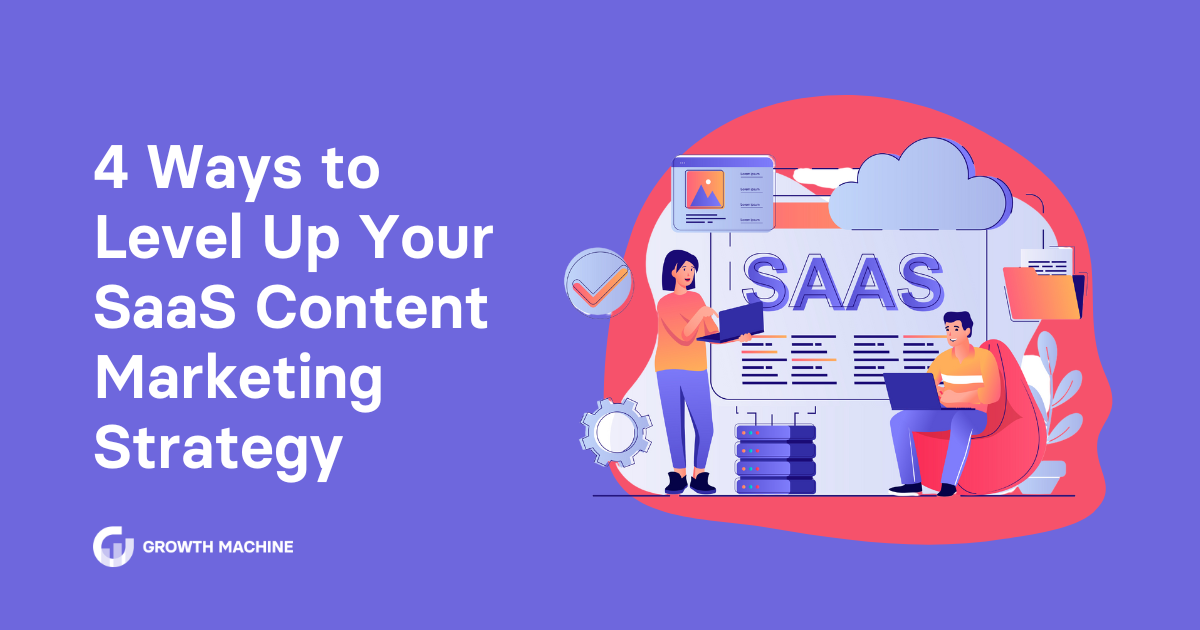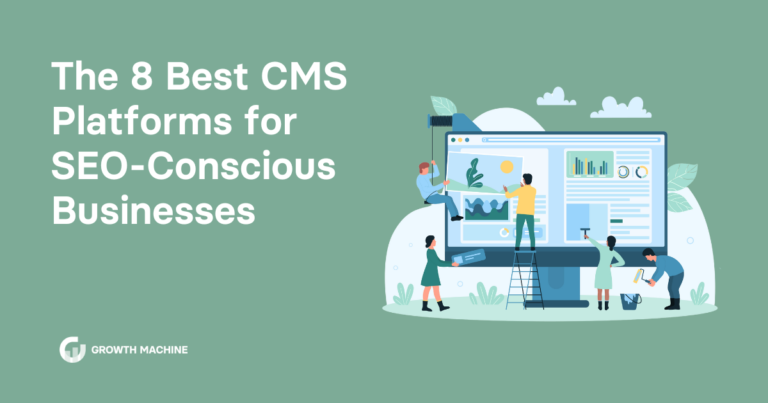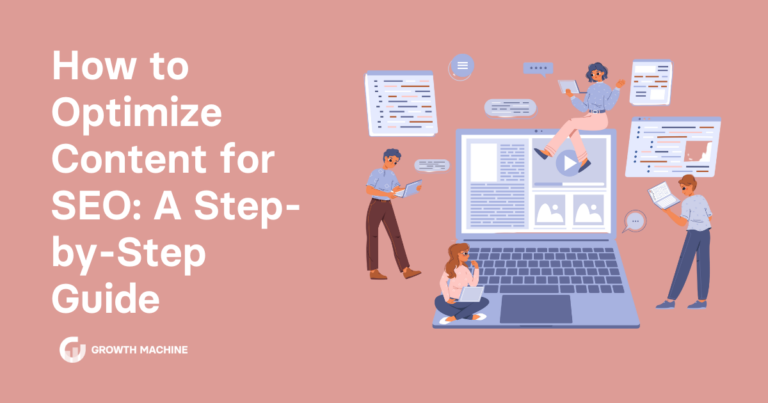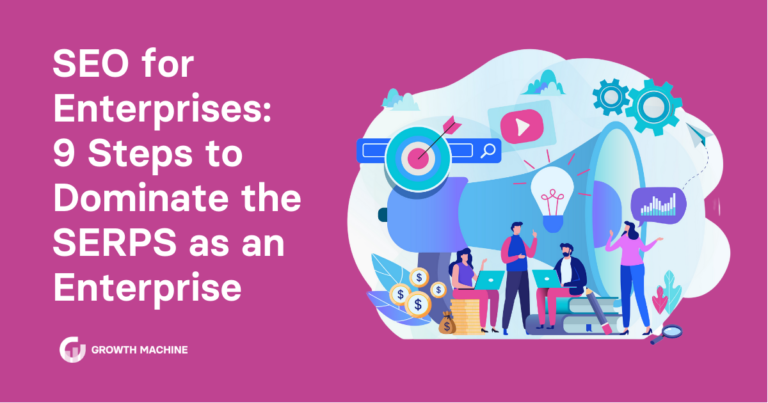4 Ways to Level Up Your SaaS Content Marketing Strategy
It’s challenging to stand out in a sea of great SaaS content. With expert resources from big names like Adobe and Salesforce dominating the SERPs, how will you differentiate your brand?
In overcrowded niches like FinTech and SaaS, audiences suffer from content fatigue, making it much harder to reach prospective customers. You may be excited to finally put a new guide or article out in front of your audience, only to find your audience doesn’t see the value the article offers, or even worse, doesn’t see it at all.
So, what do you do when you find yourself fighting for your place on Google’s coveted first page??
You get creative, take a unique approach, find a new angle, and take the tried and true SaaS content marketing strategies a step further.
Whether you’ve laid the groundwork or you’re just getting started, these four SaaS content marketing strategies will help you find your place in a saturated category and make your mark online.
But first, let’s have a quick refresher on SaaS content marketing and how that differs from content marketing in other industries.
What Is SaaS Content Marketing?
Like companies in other industries, content marketing for SaaS brands is a long-term marketing strategy aimed at attracting new customers and serving existing ones. The goal is to position a brand’s site at the top of Google SERPs for a list of relevant keywords to drive traffic back to that brand’s website.
The SaaS customer journey tends to be longer and more carefully considered than that of other industries. SaaS, or Software as a Service, is often a more complex service offering than most industries and requires great depth and detail in each resource and article published.
Top-of-the-funnel content used to create brand awareness, and middle-of-the-funnel content focused on lead generation need to be value-packed and informative guides and resources.
SaaS brands can be both B2B (business-to-business) and B2C (business-to-consumer), and depending on the audience, the content marketing strategy will shift. Whether you’re targeting consumers to sell your cloud storage services or decision makers with your CRM platform, we have four tips to get your content to the top of Google and help your brand stand out.
Take These 4 Proven SaaS Content Marketing Strategies to the Next Level
Before adding another white paper or case study to your content calendar, take a look at how to up the impact of these four SaaS content marketing strategies.
1. Show Your Unique Personality
SaaS content deals with complex subjects making it easy to get so deep in the weeds with the details that you forget to have fun.
But you must capture attention with your content marketing efforts and keep readers engaged, even when the subject matter is dry. At each customer touch point, infuse your content and copy with your brand’s unique voice, bringing a personality to complex or boring subject matter.
Take a look at this example from Leadfeeder’s education center:

While many lead generation resources are dense and difficult to digest, the brand uses a friendly, conversational tone and sense of humor to keep readers engaged and on the page, learning more about their product.
You don’t necessarily need to infuse your content with humor to show personality. Find the right tone and voice that will resonate with your audience and represent your brand.
The goal is to be authentic and memorable. You may take a controversial stance on a topic that gets people thinking and talking or tell honest stories that your target audience can relate to.
Whatever personality you choose for your brand, make sure you carefully consider your target audience, what resonates with them, and then show up and show off through your content to stand out from the competition.
Be aware of the long-tail keywords your audience searches for, i.e. the questions they ask and problems they need resolving. This way you build a content library that pleases both users and search engines. Create SEO-friendly content that readers also relate to.
2. Collaborate with Experts
The SaaS industry is growing faster than ever before — 377 new SaaS companies launched in 2021 alone. Competition is high. Nothing shows potential customers that you are an authority in your field like the stamp of approval from well-known industry experts.
Your target audience needs to know that you’re the best brand to solve their pain points and make their lives easier. Furthermore, displaying expertise, authoritativeness, and trustworthiness (E-A-T) is a critical ranking factor and features heavily in Google’s Search Quality Evaluator Guidelines.
When you collaborate with a trusted expert in your niche, you borrow their authority. And when they work with you, sharing their positive experience with their audience, this generates social proof and encourages others to trust your brand too. In other words, potential customers think, “If Terry McExpert supports the product, then so should I.”
There are many ways to collaborate on content. Shopify, for example, collaborates with well-known experts and influencers on free online courses:

And while this has proven to be an excellent strategy for Shopify, your brand doesn’t have to do something of the same magnitude to see results. You can start smaller if you don’t have the budget or influence to get celebrities and big names on board. Reach out to thought leaders in your field to get original quotes for your articles, ask for guest blogs, or find guest podcasting opportunities.
This levels up your content’s authority and opens the door for potential future collaborations.
Givebutter, a non-profit fundraising platform, leverages the power of collaboration by housing a directory of verified partners on its site. Here, potential Givebutter customers can find a slew of service providers that may solve a mix of different needs and, in the process, see brands and businesses who trust Givebutter as their fundraising platform — social proof.
To achieve something like this, you need a solid networking strategy. Begin by leveraging existing relationships and look for new opportunities to start conversations online with experts before pitching anything. When you are ready to ask for collaborations, be sure that you show how the partnership will be beneficial to both brands.
3. Engage Users on Social Media
Customer loyalty and retention are as vital to the growth of a SaaS brand as new acquisitions, so it’s imperative to continue to engage existing customers.
When you think of your SaaS content marketing strategy, social media may not come to mind. SaaS marketing tends to skew toward long-form, informative content for advanced readers rather than the kind of snappy, approachable content you find on social media. Social media can (and should!) be leveraged as an extension of your content marketing efforts, to create native content, and to use as part of your distribution strategy.
Plus, it fosters human interaction and provides a space for genuine connections with users.
Vonage, for instance, shares a mix of quality content on its LinkedIn page. In addition to typical articles and resources, the brand shares employee pets, silly holiday content, engaging polls and quizzes, and more.

This content type forges a personal connection between users and the brand, while polls and quizzes are an opportunity to engage users and learn from potential customers.

When you use content this way, your brand may become ingrained in the user’s day-to-day life instead of just a faceless entity they buy a service from.
To give more life to your brand’s content marketing pieces, find opportunities to share them across social channels and engage users outside of search engines.
4. Experiment With Other Content Formats
Traditionally, high-value resources targeting high-volume keywords and in-depth training documents targeting long-tail keywords have been staples among SaaS content marketing pieces. Use them to improve SEO, teach readers about product features, and give platform walk-thrus.
But other content formats may prove equally effective in capturing audience attention, establishing authority in your industry, and generating backlinks and conversions.
To give you an example, Easy Agile uses a podcast to educate and entertain its audience:

Each episode is actionable and features insider insights from internal and external experts on the subject matter. This content type is more engaging and interesting to listeners, helps your brand stand out, and provides opportunities to repurpose podcast episodes into articles, serving searchers as well.
Along with podcasts, SaaS brands can generate buzz with other content types such as video, a newsletter subscription, online courses, and more.
Whichever content format you choose, make sure each piece is high-quality (well-written and informative), user-centric (solves user problems), and on-brand (using brand voice while engaging readers).
Create Better SaaS Content
SEO is the foundation of a strong SaaS content marketing strategy. But investing in more creative and engaging content than the competition will allow you to stand out and truly add value to your marketing strategy.
Before you publish your next piece of content, make sure it shows off your brand’s unique tone and personality and brings a human element to your software solution, to please both readers and search engines.
Find creative ways to serve your audience and tap into the audiences of other industry experts through partnerships and collaborations that build beneficial relationships and industry authority.
Finally, test new content types and platforms to reach potential customers where they already are. Diversify your customer acquisition and set your brand apart by leveraging podcasts, newsletters, YouTube and more, offering new ways for your audience to digest the same great content you’re already cooking up for SEO purposes.
What’s next? Connect with us to discuss how to develop a content strategy founded on solid SEO practices but imbued with creativity to meet the long-term marketing goals of your SaaS company.







